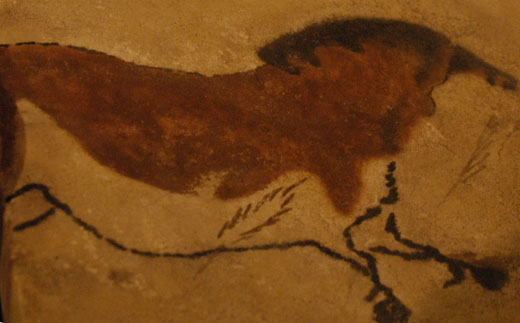The Secret’s in the Stone (or How to Build a Cave) at the Natural History Museum
/https://tf-cmsv2-smithsonianmag-media.s3.amazonaws.com/filer/newcave.jpg)
Over thousands of years, early humans made their mark with hand prints and paintings on the stone walls of caves and other hillside shelters and grottoes—but one thing is sure; humans rarely had to build the caves themselves.
That was exactly the work that foreman Jason Horne and his crew had been engaged in recently at their job site—the Natural History Museum’s David H. Koch Hall of Human Origins, the new 15,000-square-foot human evolution exhibition that will open March 17.
Horne's crew, crafts people and designers from the High Springs, Florida-based fabrication company ThemeWorks, arrived en masse to create a cave vignette, which will showcase reproductions of hand prints and paintings from several different populations of early humans living in or around caves in Africa, Australia, Southeast Asia, Europe, South America and North America. The exhibit will also include recreations of both the Laetoli footprints and the Lucy skeleton.
Since the drawings and hand prints that will appear on the museum's faux cave will represent those from so many different locations, the crew couldn’t use any one actual cave as inspiration, said Junko Chinen, a project manager at the museum.
So Horne created a model from pictures and videos shot at several caves. Working from a foam model on a one-inch scale, the construction team began with a frame made of foot-long metal rods, filling the space in between with metal netting.
As the construction team continued the cave slowly came to life, adding two layers of “rock” concrete, since one alone wasn’t strong enough to support the kind of detail needed to make it realistic.
The real secret, Horne explained, in making this exhibit come to life is texture. “If you get that wrong it will look totally fake,” he said.
To get it right, the crew used simple hand tools to help them create the faulted and fractured look of an authentic cave. With a rake, dragging it horizontally across the first layer of concrete, they crafted the cave's rugged, distinct lines and rough edges. A trowel shaped the contours of the walls and small paint brushes added more texture.
Once the cave is complete, the crew will next turn to another task. They will recreate six clusters of hand prints, modeled after actual prints found in caves the world over, from Gua Tewet Cave in Borneo (the hand prints are 12,000 to 10,000 years old); to Elands Bay Cave in Western Cape, South Africa (about 2,000 years); to Mt. Borradaile in Arnhem Land, Australia (about 20,000 years old); to Pech Merle, France (about 25,000 years old); to Canyon de Chelly in Arizona ( about 1,000 years old) to Cueva de las Manos in Argentina (about 9,300 to 2,600 years old).

An art gallery of sorts will also take shape inside the museum's new cave gallery. Paintings, or the works of art, crafted by our ancient human ancestors will be carefully drawn with paintbrush, hands and other tools onto the walls. The drawings, range from the “yellow horse,” drawn on the cave ceiling in Lascaux, France about 17,000 years ago, to an undated dance scene found in a cave in Orange Spring in the Republic of South Africa.
And then, they team will move onto the Laetoli footprints—but Horne says his own bare feet won't be involved in that process.
"We'll carve them by hand," he said. "It's the only way to make them precise."
/https://tf-cmsv2-smithsonianmag-media.s3.amazonaws.com/accounts/headshot/erica-hendry-240.jpg)
/https://tf-cmsv2-smithsonianmag-media.s3.amazonaws.com/accounts/headshot/erica-hendry-240.jpg)